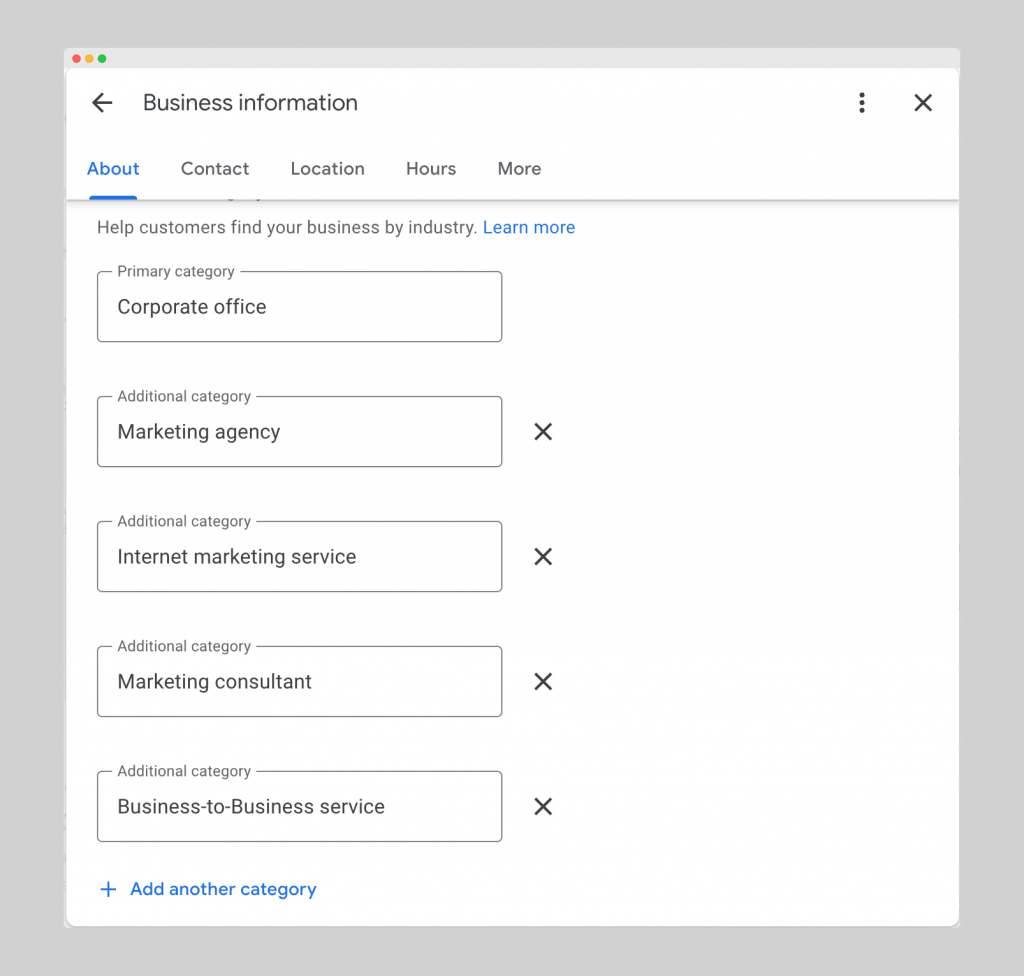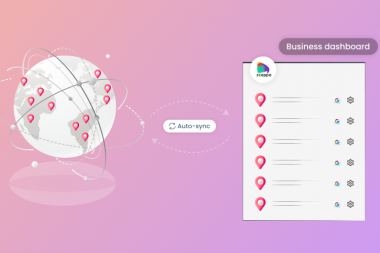The Strategic Impact of Secondary GBP Categories on Keyword Search Results

In today’s digital landscape, establishing a robust online presence is paramount for businesses seeking to thrive. Among the arsenal of tools available, Google Business Profile, formerly known as Google My Business, stands out as one of the most potent assets.
As the business world increasingly prioritizes its online footprint, it’s essential to acknowledge that your competitors are doing the same. In this crowded digital marketplace, the question arises: How can you elevate your online reach and set yourself apart?
The answer lies in crafting a meticulously optimized Google Business Profile, coupled with selecting the right primary and secondary business categories.
Imagine you have a multi-specialty hospital. So, your primary category could be ‘hospital,’ but choosing an orthopedic center, ‘mental health services,’ or ‘Surgical Center’ as secondary business categories could give you that extra edge. It will help highlight specific aspects of the hospital’s specialties, making it more informative for individuals searching for healthcare services tailored to their needs.
This blog is all about Google Business Profile Secondary Category- how to choose the proper categories and what mistakes you should avoid during the process. But first, let’s take a look at some basics.
What is Secondary GBP Categories

16% of GBP Listings receive more than 100 Calls per month.
Considering that many Google Business Profiles are poorly optimized, putting just a bit more effort into optimization than your competitors can pay off rewardingly.
The key here is using the Google Business Category for your online store. While the primary category mirrors your core services, secondary Google Business Categories let you showcase additional facets- the broad range of products or services you offer. They transform your profile from a static snapshot to a dynamic showcase of possibilities.
Like in the above example, by selecting the secondary categories, your hospital’s Google Business Profile becomes a comprehensive representation of its diverse offerings, ensuring that potential patients get detailed insight into the diverse medical specialties and services your hospital offers.
Secondary Categories enhance your profile’s relevance, making it more likely to appear in diverse search queries, attracting a spectrum of potential customers.
Significance of Secondary Categories
A question that might arise is that when you have already mentioned your business genre via primary category, what more could secondary categories tell? Let’s take a look at why it is important to choose them right-
- Provides Additional Context
While the primary category outlines your main business focus, secondary categories allow you to expand on this foundation. They provide a more comprehensive view and act as descriptive layers. Additionally, many businesses are multifaceted, offering a range of services. Secondary categories help mention these diverse products/services, ensuring that users searching for specific services find accurate information about each facet of your business.
- Targets Specific Customer Needs
By selecting secondary categories from
Google business category list that aligns with niche services or unique features, your business can engage in targeted marketing. This attracts customers who are specifically interested in those offerings, leading to more qualified leads.
- Higher Chances of Appearing in Search Results
Businesses with relevant secondary categories have higher chances of appearing in search results due to the increased specificity and precision these categories provide.
Around 97% of consumers use online media to shop locally. When users search for particular services or features, Google’s algorithm considers the relevance of businesses to those specific queries. When your offerings align closely with what users are searching for, your business is more likely to appear prominently in the search results.
- Offers Flexibility To Adapt to Evolution
Secondary categories allow a business to evolve and expand its offerings while reflecting this growth. Whether introducing new services or diversifying products, you can update your secondary categories to accurately represent the evolving nature of your business.
Additionally, in the event of a strategic shift or pivot in your business focus, updating secondary categories allows you to communicate these changes effectively.
How to Choose the Right Secondary Category
You can select up to 9 GBP secondary categories. Google’s search engine will then use this information to make you appear in potential customers’ search results.
Hence, it is crucial to select the right categories. Here’s a step-by-step guide-
Understand Your Business
Begin by comprehensively understanding your business. Identify all the products, services, or features you offer beyond your primary category. This clarity lays the foundation for informed secondary category choices.
Think Like Your Customers
Put yourself in the shoes of your customers. Consider what additional services or features they might be searching for when looking for a business like yours. For instance, patients looking for knee replacement may appreciate a “Orthopaedic Center” secondary category, reflecting the hospital’s services.
Prioritize Local Relevance
Considering the current era where hyperlocal searches have been gaining rapid prominence, you should prioritize secondary categories that are locally relevant. For instance, in the hospital example, selecting categories like “Local Pediatric Healthcare” or “Local Emergency Care Facility” from the Google Categories List will emphasize your commitment to meeting local needs.
Diversify Your Category Choice
Aim for diversity in your secondary categories. There are around 4000 categories in the Google Business Category List to choose from. Select options that showcase the various dimensions of your business. This ensures that you are not only appealing to a broader audience but also providing a comprehensive view of your offerings.
Keep a Close Look at Your Competition
Research your competitors and analyze their secondary categories. Identify gaps or opportunities that can set your business apart. Choosing complementary but distinct categories can help you differentiate from others in your industry.
One way to do so is by right-clicking on your competitor’s profile and selecting ‘View Page Source”.
Press Ctrl +F, and type ‘Category’ in the search box. The results will give you their business category list.
Regularly Review and Update
The business landscape evolves, and so should your secondary categories. Regularly review and update them to reflect any changes in your offerings or market trends. For instance, if you introduce new specialities like cardiology or expand your services like pharmacy, promptly update your categories to reflect these changes. This ensures that your Google Business Profile remains accurate and competitive.
Common Mistakes to Avoid Pitfalls in Selecting or Managing Secondary Categories
Consistency between primary and secondary categories avoids confusion and ensures a coherent representation. Hence, avoiding pitfalls in selecting and managing secondary business categories on your Google Business Profile is crucial for an accurate and effective online representation. Here are a few common mistakes to steer clear of:
Overlooking Updates
One common mistake is neglecting to update secondary categories regularly. Failing to reflect changes in your offerings through updated categories can result in outdated and inaccurate information for potential customers. To prevent the oversight of updates, regularly schedule reviews of your GBP, perhaps monthly or quarterly, to ensure that information stays current. You can also set calendar reminders to prompt timely updates.
Ignoring Keyword Optimization
Secondary categories are an opportunity to optimize for relevant keywords. Ignoring this aspect means missing out on potential search visibility. Research relevant keywords that potential customers might use in searches related to your offerings. Incorporate these keywords strategically into your secondary categories to align with common search terms. Further, ensure that the chosen categories resonate with popular search queries.
Inconsistency with Primary Category
As mentioned earlier, if there’s a disconnect between your primary and secondary categories, it can lead to confusion for users and impact the accuracy of search results. For instance, if your primary category is “hospital,” avoid selecting secondary categories that contradict this focus.
Selecting Prohibited Categories
Google has guidelines on prohibited categories. Selecting categories that violate these guidelines can lead to penalties, including Google Business Post Removal, or Suspension of your Google Business Profile in severe cases. Be aware of and adhere to Google’s policies to maintain a positive online presence.
FAQs
What is a Business Category?
Business categories are classifications chosen by businesses on Google My Business to describe their services. It helps users find relevant businesses in searches and on Google Maps.
How Many Secondary GBP Categories Should I Choose?
Google allows for up to 9 secondary categories. If you have 9 separate categories that are relevant, choose all 9; otherwise, choose only the ones that you have. The aim is to rank for the categories that matter to you.
What Should I Do if Google Doesn’t Have a Category I Need?
If Google lacks a category essential for your business on Google Business Profile, choose the closest available match that aligns with your primary offerings. You can also nudge Google and suggest your category by clicking on the “Suggest an edit” option on your profile.
Master Secondary Categories for a Stellar Google Business Profile
Secondary categories help businesses spread online awareness about their entire range of product/service offerings. When chosen wisely, they provide the context needed to be discoverable amidst the competition and cater to the varied needs of your audience. As you refine and optimize your GBP, remember that it’s not just about being found; it’s about being found with precision and relevance.
By understanding your business, thinking like your customers, prioritizing local relevance, diversifying your category choices, keeping a close eye on your competition, and regularly reviewing and updating your selections, you pave the way for a thoughtful selection of secondary categories. This will ultimately help you build and maintain a dynamic and responsive online presence.
Elevate your Google Business Profile skills with Zceppa. Sign up for a free GBP Masterclass or explore premium features for better listing control.
If you have specific thoughts or comments, please feel free to write me at anirudh.gopinath@zceppa.com
Signup for a free trial
Zceppa’s products empower your business to win every mobile-first consumer interaction across the buying journey.


